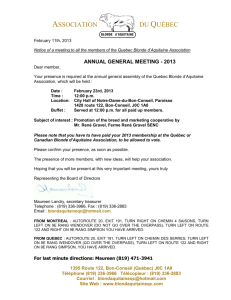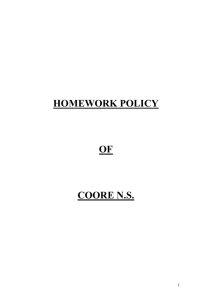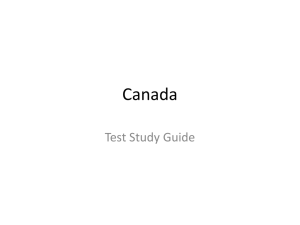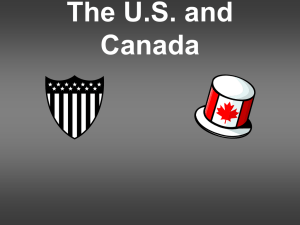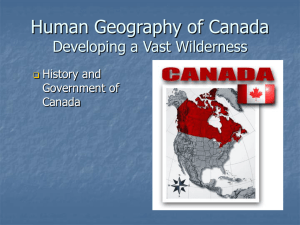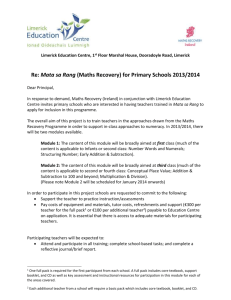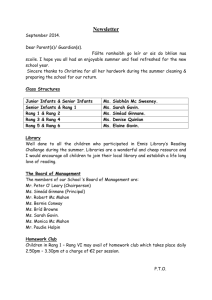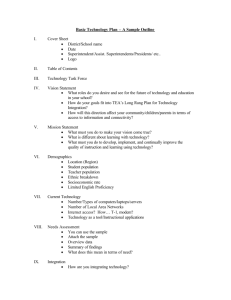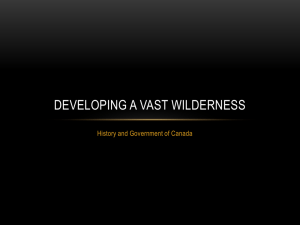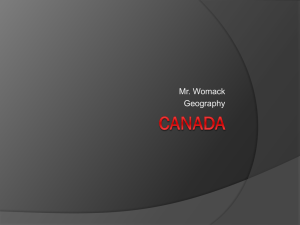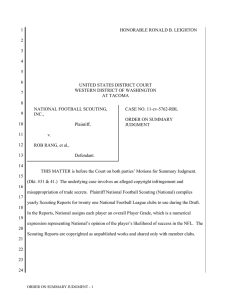Canada's Core Region
advertisement
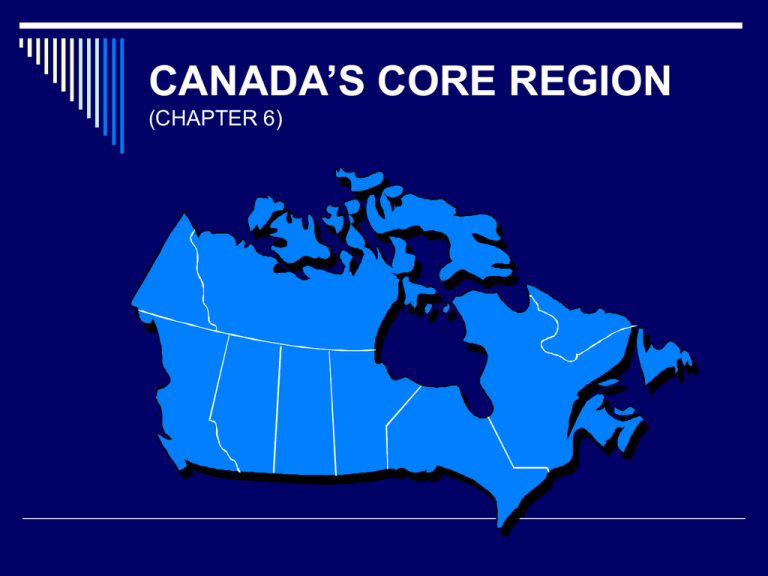
CANADA’S CORE REGION (CHAPTER 6) INTRODUCTION 75% of Canada's population resides within 100 miles of the U.S. border. 90% of all Canadians live within 200 miles of the boundary. Canada's core region lies entirely within the provinces of Quebec and Ontario. More than 60% of the country's population resides within the southern sections of these two provinces. The core is the historical hearth and has the overwhelming share of the country's population & economic activity. CANADA’S POPULATION DISTRIBUTION CANADA'S ORGANIZATION Federation A form of government Powers and functions are divided between a central government and political subdivisions Significant degree of political autonomy Canada is a federal state which is divided into ten provinces and three territories. Bilingualism The use of either one of two languages French and English have equal status. Supports the country's organization as a federal rather than a unitary state THE CORE REGION Site Characteristics Advantages Level plains Location along the shores of the Great Lakes Relatively fertile soils Adequate growing seasons See maps on page 111. THE CORE REGION (continued) Situational Aspects Advantages Accessibility resources to link it to major U.S. markets, where 88% of Canada's exports are destined Open to U.S. immigration and investment Close to power resources (hydroelectric and fossil fuels) THE CORE REGION (continued) Golden Horseshoe An integral part of the core Highest per capita income levels in the country Characterized by intense economic activity Refers to the money generating potential of this crescent shaped region which surrounds western Lake Ontario TORONTO OTTAWA MONTREAL THE CORE REGION Limitations Outside of the Core Growing season Soil quality Drainage Markets (continued) CLIMATE TYPES PRECIPITATION PATTERNS SOIL TYPES PHYSIOGRAPHIC REGIONS THE RANG SURVEY SYSTEM A form of land alienation Lines of long, narrow fields - created to maximize access to rivers or roads for transportation. Prevails along the St. Lawrence Seaway in southern Quebec. Each rang was comprised of a series of rotures or "long lots," with a mean distance of 1/2 mile. See fig 6-4 on page 117. THE RANG SURVEY SYSTEM (Key Terms) Long Lot A subdivision of land within the rang system A parcel perpendicular to a road or river and has long but narrow dimensions Also called a “river lot” where appropriate. Average size in Quebec is from 35-75 acres. Arpent A French unit of measurement of approximately 192 ft Long lots or rotures were 2 or 3 arpents wide by 10 times the length. THE RANG SURVEY SYSTEM (continued) Advantages: Equity in type and quality of land Access to transportation route Access to water Lived in close proximity to neighbors Easy to survey CANADA’S CORE REGION (CHAPTER 6)
